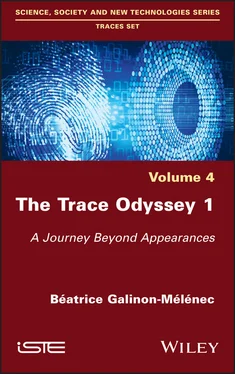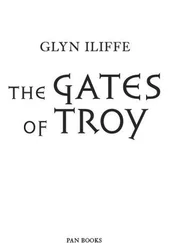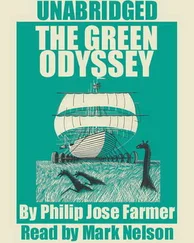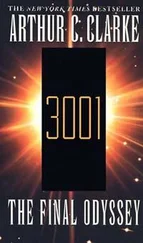Hempel, J. (2018). Want to prove your business is fair? Audit your algorithm. Wired . May 9 [Online]. Available: https://www.wired.com/story/want-to-prove-your-business-is-fair-audit-your-algorithm.
Jacquet-Andrieu, A. (2012). Langage de l ’ Homme. De l ’ étude pluridisciplinaire à l ’ action transdisciplinaire . Presses académiques francophones, Saarbrücken, Germany.
Jeanneret, Y. (2014). Critique de la trivialité : les médiations de la communication, enjeu de pouvoir . Non Standard, Paris.
Jeanneret, Y. (2020). The Trace Factory . ISTE Ltd, London, and John Wiley & Sons, New York.
Jonas, H. (1997). Pour une éthique du futur . Rivages, Paris.
Lassègue, J. (1996). La modélisation informatique et l’intelligence artificielle. Intellectica . 1, 21–65.
Leleu-Merviel, S. (2018). Informational Tracking . ISTE Ltd, London, and John Wiley & Sons, New York.
Littré, É. (1956–1958). Dictionnaire de la langue Française , Paubert, J.J. (ed.), 1–4. Gallimard-Hachette, 5–7, Paris.
Montaigne, M.E. (1989). De l ’ amitié, livre I . Honoré Champion, Paris.
Morin, E. (1996). Vers une théorie de la reliance généralisée. In Voyage au cœur des sciences humaines, de la reliance , Bolle De Bal, M. (eds). Editions L’Harmattan, Paris.
O’Neil, C. (2016). Weapons of Math Destruction . Penguin Random House, New York.
Peirce, C.S. (2002). OEuvres philosophiques, I. Pragmatisme et pragmaticisme . Éditions du Cerf, Paris.
Perrier, E. (2014). De la simplexité et des systèmes complexes. In Complexité-Simplexité , Berthoz, A. and Petit, J.-L. (eds). Collège de France, Paris.
Reeves, H., Rosnay, J., Coppens Y., and Simmonet D. (1996). La plus belle histoire du monde : les secrets de nos origines . Le Seuil, Paris.
Rey, A. and Hordé, T. (2006). Dictionnaire historique de la langue française : contenant les mots français en usage et quelques autres délaissés, avec leur origine proche et lointaine... Le Robert, Paris.
Sperber, D. and Wilson, D. (1986). La pertinence . Éditions de Minuit, Paris.
Watsuji, T. (2011). Fûdo. Le milieu humain . CNRS, Paris.
Watzlawick, P. (1978). La réalité de la réalité . Le Seuil, Paris.
Watzlawick, P., Helmick Beavin, J., and Jackson Don, D. (1979). Une logique de la communication. Le Seuil, Paris.
Weber, F. and Beaud, S. (1997). Guide de l ’ enquête de terrain . La Découverte, Paris.
Winkin, Y. (1984). La nouvelle communication . Le Seuil, Poche, Paris.
1 1 In this book, the term conséquences-traces is used in its original French to indicate that what is written is integrally bound to the concept of a “trace”, seen through the angle of its consequences. Similarly, each time a phrase includes the term “trace”, it will be written in French, indicating a terminology specific to the paradigm of Homme-trace (Ichnos-Anthropos in Greek, Human-Trace in English). This approach implies an understanding in terms of the interactions of complex systems based on the concept of conséquences-traces. Concepts like Homme-trace, and conséquences-traces are extensively developed throughout the book.
2 2 As is to be seen later in the book, (a) the mathematical dimension of a digital algorithm should not conceal the fact that algorithms are fabricated by human beings with their inherent shortcomings. Hence, by their very nature, algorithms convey the conséquences-traces of their judgments. In short, algorithms are everything but neutral (“unbiased”). As Cathy O’Neil (2016, p. 21) reminds us: “Our own values and desires influence our choices, from the data we choose to collect to the questions we ask. Models are opinions embedded in mathematics”. She also goes on to state that “mathematical models are based on the past, and on the assumption that patterns will repeat” (p. 38); (b) the interaction of the complex systems of digital conséquences-traces can produce unexpected results for human beings. These observations lead Cathy O’Neil to state that algorithms create their own reality. See in French: https://www.liberation.fr/debats/2018/11/16/cathy-o-neil-les-algorithmes-creent-leurpropre-realite_1692515.
3 3 See Chapter 2of this volume.
4 4 The idea of “computation” is specific to computing in that it is based solely on 0-1.
5 5 Computational traceability must be possible and must allow the results to be traced back, concerning the algorithmic consequences in algorithmic outcomes/consequences, to ethical frameworks that were initially programmed by individual humans. Since some algorithms can be subject to learning loops, the algorithm is self-evolving, which makes traceability increasingly complex and problematic to reconstruct. This is the case for “learning robots”, which use such algorithms to develop an autonomy and consequently raise questions of liability in the case of human safety violations.
6 6 Forecasts for 2020: global web traffic of 2.2 ZB for a broadband connection speed of 47.7 Mbps, carried by mobile devices and Wi-Fi connections that would then represent 2/3 of the traffic, and by connected objects connected to IP networks that would be three times more than the world’s population.
7 7 “Domino effect” is a term we use to signify chain reactions.
8 8 When we focus the illustrations on the concept of “corps-traces” (Volume 2), we use the field of medical diagnosis to illustrate the point.
9 9 As indicated by Yves Jeanneret (in Jeanneret Y., The Trace Factory, ISTE, London and John Wiley & Sons, New York, 2020, p. 35–39), the term indice is often translated into English as “index”. However, these terms are not perfect synonyms. This is why we have kept the French term indice in this book. In the case of Ginzburg, this is all the more justified in Mythes, emblems et traces (1989), where he explains the link between “traces and indicator roots” (idem, p. 139–181).
10 10 As is to be seen later, Carlo Ginzburg also refers to Doctor Giovanni Morelli.
11 11 Later in the book, we stress the ethical dimension to be included in the workings within the ecosystem ( Chapter 2). Our thoughts on this point (Galinon-Mélénec, 2017) concur with that of the recommendations of Guszcza (2018), Hempel (2018) and O’Neil (2018), namely that, Algorithm auditing must be interdisciplinary in order for it to succeed. It should integrate professional skepticism with social science methodology and concepts from such fields as psychology, behavioral economics, human-centered design, and ethics. A social scientist asks not only, “How do I optimally model and use the patterns in this data?” but further asks, “Is this sample of data suitably representative of the underlying reality?” An ethicist might go further to ask a question such as: “Is the distribution based on today’s reality the appropriate one to use?” (Guszcza et al. 2018). As part of auditing algorithm, Cathy O’Neill (of O’Neil Risk Consulting and Algorithmic Auditing) created a tool she calls an ethical matrix, a worksheet that helps companies think through the consequences – intended and otherwise – of the algorithm’s results. Across the top of the matrix are a half-dozen traits – accuracy, consistency, bias, transparency, fairness and timeliness. The vertical axis lists that the stakeholders’ Rentlogic must consider in its model: building owners, renters, the company, and NYC officials. O’Neil says the matrix creates “a conversation around what you might need to worry about”. It’s intended to prompt programmers to consider important questions as they work: “Who cares if this algo works? Who cares if it fails?” she asks, “Who gets hurt if it’s wrong?” When these questions reveal ethically problematic consequences like, say, discriminating against a class of people, she flags the yellow or red box (see Hempel 2018).
Читать дальше












